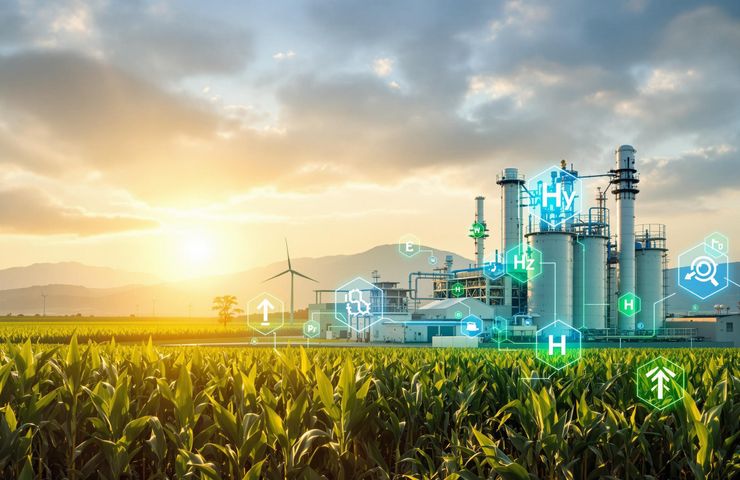Revolutionizing Green Hydrogen Production from Sugarcane Waste
Key Ideas
- University of Johannesburg researchers develop Sorption-Enhanced Chemical Looping Gasification (SECLG) to convert sugarcane bagasse into high-purity hydrogen while capturing CO2, offering a cleaner and more efficient alternative.
- SECLG process can yield up to 69% hydrogen, significantly reducing tar formation and eliminating the need for a separate CO2 capture system, making it cost-effective and environmentally friendly.
- Countries like South Africa, Brazil, and India, with established sugarcane economies, can leverage SECLG to produce local green hydrogen, contributing to industrial decarbonization and utilizing agricultural waste effectively.
- While still in the simulation stage, further testing and investment are required to implement SECLG on an industrial scale, presenting a promising advancement towards accessible clean hydrogen production in biomass-rich regions.
Researchers at the University of Johannesburg have introduced a groundbreaking approach to green hydrogen production through the development of Sorption-Enhanced Chemical Looping Gasification (SECLG). This innovative process converts sugarcane bagasse, a type of agricultural waste, into high-purity hydrogen while simultaneously capturing CO2, offering a more sustainable and cost-effective solution compared to traditional biomass gasification methods. The simulation indicates that SECLG can yield up to 69% hydrogen and greatly reduce tar formation, addressing common challenges faced in conventional gasification processes. Additionally, by capturing carbon during the reaction, SECLG eliminates the need for a separate and expensive CO2 capture system, making it an attractive option for emission reduction efforts. Countries such as South Africa, Brazil, and India, where sugarcane plays a significant role in the economy, stand to benefit from this technology by utilizing existing biomass infrastructure to jumpstart local green hydrogen production and support industrial decarbonization efforts. Although SECLG is currently in the simulation phase, further testing and investment are required to translate this innovation into practical applications on an industrial scale. The researchers remain optimistic about the potential of SECLG to enhance the accessibility of clean hydrogen production, particularly in regions abundant in biomass resources like sugarcane bagasse.
